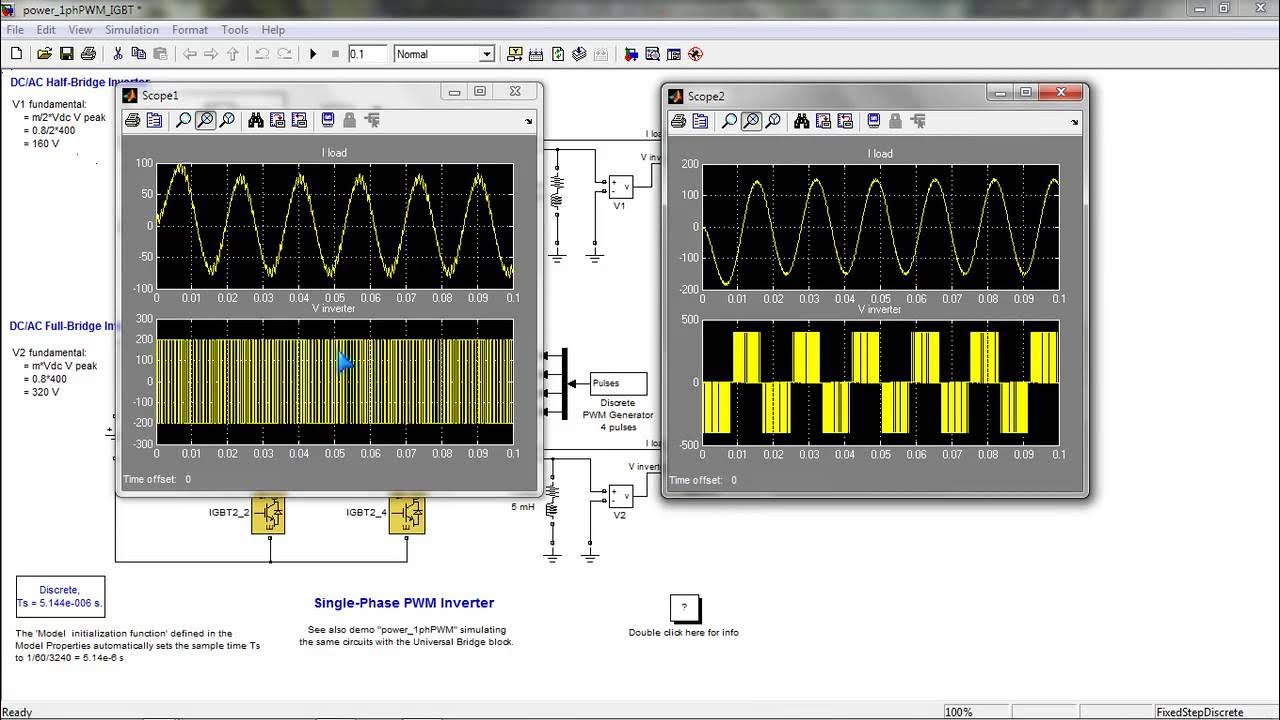Inverters, How do they work?
Summary
TLDRThis video explains the essential workings of inverters, focusing on how they convert DC to AC power, from simple square wave inverters to advanced pulse width modulation (PWM) systems. It covers how PWM is used to generate a pure sinusoidal output, the role of passive filters in smoothing power flow, and the use of multi-level inverter technology for precision. The video also highlights the importance of inverters in electric vehicles, where they control the speed and power of the car, making them a key component in modern energy systems and renewable technologies.
Takeaways
- 😀 Inverters are essential for converting DC power to AC, playing a major role in electric vehicles and renewable energy systems.
- 😀 Old inverters produced square wave AC, which is not ideal for sensitive equipment due to noise and heating issues.
- 😀 A **full-bridge inverter** circuit with four switches can generate a square wave by alternating the current flow.
- 😀 Pulse Width Modulation (PWM) is used in modern inverters to create a more accurate and smoother sine wave output.
- 😀 PWM works by generating voltage pulses of varying widths that approximate a sine wave when averaged over time.
- 😀 The finer the pulse, the closer the output waveform is to a pure sine wave.
- 😀 Comparators are used to compare sine and triangular waves to control MOSFET switches, ensuring accurate PWM operation.
- 😀 Passive filters (inductors and capacitors) are used to smooth the voltage and current, further refining the sine wave output.
- 😀 Multi-level inverters, which use more than two voltage levels, provide a more accurate approximation of a sine wave and reduce errors.
- 😀 In electric vehicles, inverters control both the frequency (motor speed) and amplitude (power) of the motor, optimizing vehicle performance.
- 😀 The inverter is often considered the 'brain' of electric vehicles, adjusting the power output to meet driving conditions and maximize efficiency.
Q & A
What role do inverters play in modern technology?
-Inverters are crucial in modern technology, especially with the rise of electric cars and renewable energy. They convert DC power into AC power, enabling the operation of devices like uninterruptible power supplies, electrical machines, and active power filters.
What is the basic function of an inverter?
-An inverter's basic function is to convert direct current (DC) into alternating current (AC), allowing electricity to be used in appliances and systems that require AC power.
How was AC power traditionally generated in inverters?
-Traditionally, inverters generated AC power in the form of square waves, which were simple and easy to create but had issues like electrical noise and heating of appliances.
What problems are associated with square wave AC power?
-Square wave AC power, while simple to produce, causes electrical noise, a humming sound in appliances, and results in overheating of electric equipment, making it inefficient for most modern applications.
What is Pulse Width Modulation (PWM) and how does it improve the output of inverters?
-Pulse Width Modulation (PWM) is a technique used in modern inverters where DC voltage is converted into pulses of varying widths. By averaging these pulses over time, the output closely approximates a sine wave, improving the quality of the AC power.
How does the PWM technique generate a sine wave?
-PWM generates a sine wave by varying the width of voltage pulses. In regions requiring higher voltage, wider pulses are generated. When these pulses are averaged over a small time period, they approximate a sine wave, with finer pulses leading to a more accurate sine wave.
What is the role of comparators in modern inverters?
-Comparators are used in modern inverters to compare a sine wave with a triangular wave. They control the switching of MOSFETs, ensuring that the inverter produces the desired voltage pulses for generating a sine wave output.
What is the significance of passive filters in inverters?
-Passive filters, consisting of inductors and capacitors, are used to smooth out the pulses in the output of inverters. Inductors smoothen the current, while capacitors smoothen the voltage, ensuring that the final output is a clean and stable sine wave.
What are multi-level inverters and how do they improve the output?
-Multi-level inverters use more than two voltage levels, providing a better approximation of a sine wave. This reduces instantaneous errors and is especially beneficial in high-precision applications like wind turbines and electric vehicles.
How do inverters contribute to the operation of electric cars?
-Inverters in electric cars control the speed and power of the vehicle by adjusting the frequency and amplitude of the AC power. This allows the inverter to adapt the driving conditions for optimal efficiency and performance.
Outlines

このセクションは有料ユーザー限定です。 アクセスするには、アップグレードをお願いします。
今すぐアップグレードMindmap

このセクションは有料ユーザー限定です。 アクセスするには、アップグレードをお願いします。
今すぐアップグレードKeywords

このセクションは有料ユーザー限定です。 アクセスするには、アップグレードをお願いします。
今すぐアップグレードHighlights

このセクションは有料ユーザー限定です。 アクセスするには、アップグレードをお願いします。
今すぐアップグレードTranscripts

このセクションは有料ユーザー限定です。 アクセスするには、アップグレードをお願いします。
今すぐアップグレード5.0 / 5 (0 votes)






